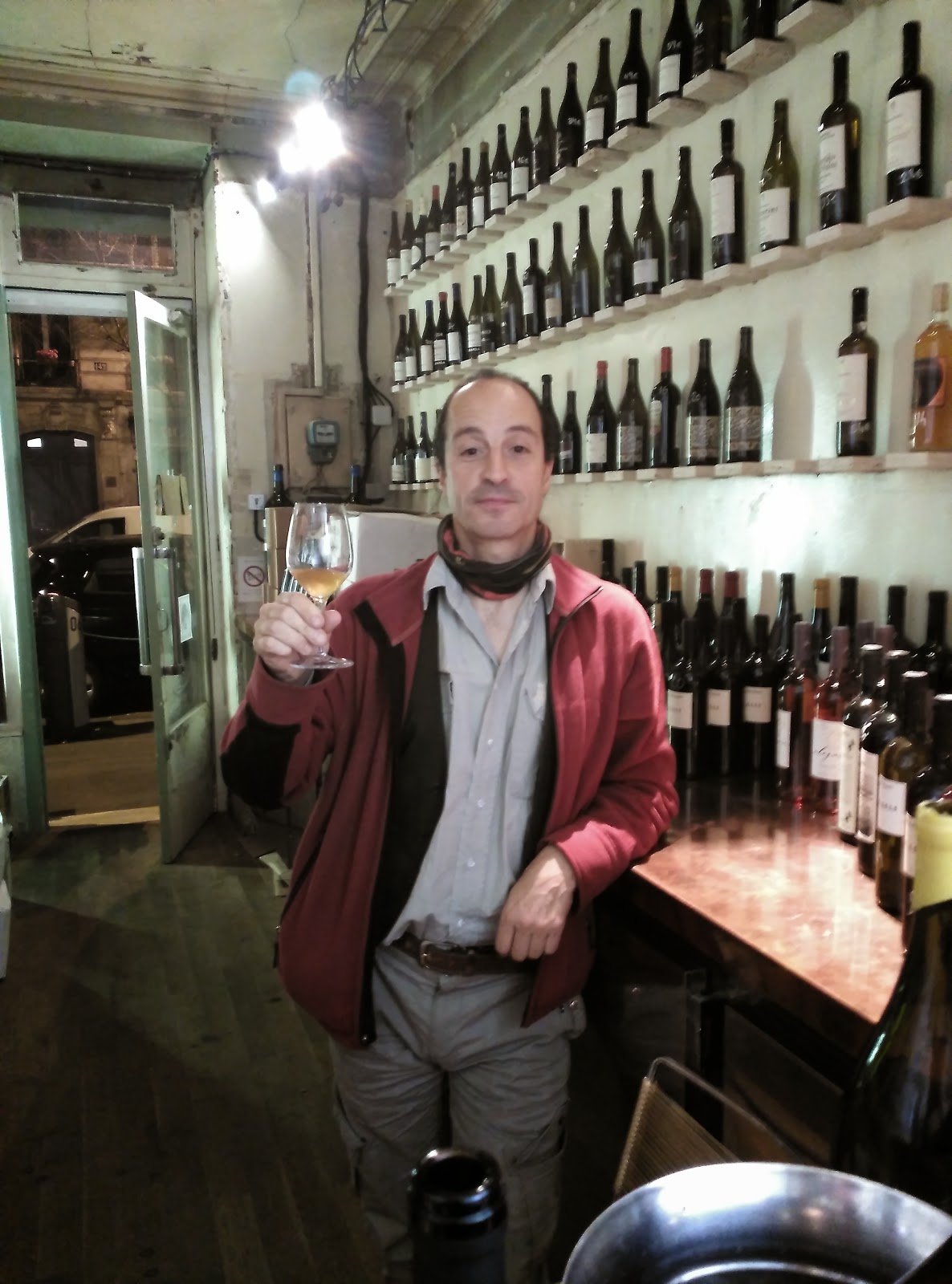Below are the vineyards that I attend to myself, but apart from the grapes from these vineyards, I also buy in grapes from local grapegrowers (if they agree to abide by certain conditions).
Carabaña Vineyard (Field blend of Airén and Tempranillo; 1 hectare total)
This vineyard is all pruned already:
 |
| Airén and Tempranillo vines all prunes in Carabaña |
All I have to do now is pile up those canes into bigger piles so that the ‘tractorista’ can come and pulverize them while at the same time cutting back the high grass and flowers and plants and thistles. This will happen in April/May so that he only needs to come once, because by that time of year the growing season for grass and flowers is over, so they won’t grow back.
Most grapegrowers either burn the canes or ‘dispose’ of them by taking them to the municipal dump. But I believe that it is much better to return the vineyard material to the soil.
Another pending item in this vineyard is some manure. I’ve been trying to contact an organic sheep and goat farm up in the mountains near Madrid, to arrange for picking up about 10 t of manure, ... but so far to no avail. Here’s some pics of the last time I did it:
insert photo
And yet another pending item here in Carabaña, is to replant some new vines in the spaces where the original vines have died. There are about 200 such spaces. I’ve already bought 200 pre-grafted baby vines, and they are ready for planting, in April. They are Tempranillo grafted onto American rootstock “Paulsen 1103”. I really should have taken my own cuttings from the vines in the vineyard and grafted them myself (selection massale), but I don’t have the skill. I would need to do a course or work with an experienced grape-grower.
I actually already attempted to plant new vines back in May 2013 (see this post). All went fine but most of the new baby vines died over the summer due to lack of watering! Live and learn. I will have to make sure I water them a few times over the summer this time.
insert photo
Villarejo. Malvar (1 ha)
This vineyard is all pruned too. Here I also have to make big piles of canes for the tractorista.
In this vineyard I like to do a secondary pruning during the summer months, to ensure that no canes, leaves or clusters are in contact with the ground, and that there is a gap at ground level so that the wind and air can circulate freely. Otherwise there is a risk of creating a humid, jungle-like environment under each vine, with the possibility of mildew and oidium.
 |
| Malvar vines in Villarejo all pruned |
El Tiemblo I. (Sierra de Gredos). Garnacha – low altitude (0.25 ha)
I am about ¼ done. I hope to finish pruning before the end of March – one more day’s work should do it.
Here I am going to do a rather strange experiment: around this olive tree (see pic below) there are about 7 vines that could climb up it, and I am going to allow them to do so, instead of pruning them normally. I’ve been reading some ancient Roman texts on viticulture recently (Pliny, Columella and others) and I was fascinated to learn that the ancient Romans had 3 systems of grape-growing: 2 just like our modern methods today, ie low bush vines (fr: en gobelet, or sp: en vaso) and trellised along wooden structures or fences (similar to our modern wires); but they also had a third system – training vines up trees!
 |
| Garnacha vines in El Tiemblo, about 1/4 prunes |
So hopefully I shall be able to harvest (somehow) about 50 kg of tree-borne grapes with which to make some ‘Roman’ wine! I already have an amphora to make this wine in. But first I have to line it with beeswax. There is a good video on YouTube that I am going to follow, and then I will make my own video when I (attempt to) line my amphora.
El Tiemblo II. (Sierra de Gredos). Garnacha - high altitude (1 ha)
At the time of writing I haven’t started pruning this vineyard. I am leaving this one to the last because it is quite high in the mountains, and there is a slight risk of late frost. So the later I prune, the later it will sprout, which will reduce the risk a bit.
The other day when I was checking the vineyard, I came across two goats! This is OK at this time of year, because there is nothing to eat; but it would be bad news if the goats could get in after the vines have sprouted, as they could eat those lovely tender and tasty vine shoots! I will have to check and mend the fence!
 |
| Goats in the Garnacha vineyard, El Tiemblo (Sierra de Gredos), as yet unpruned |















